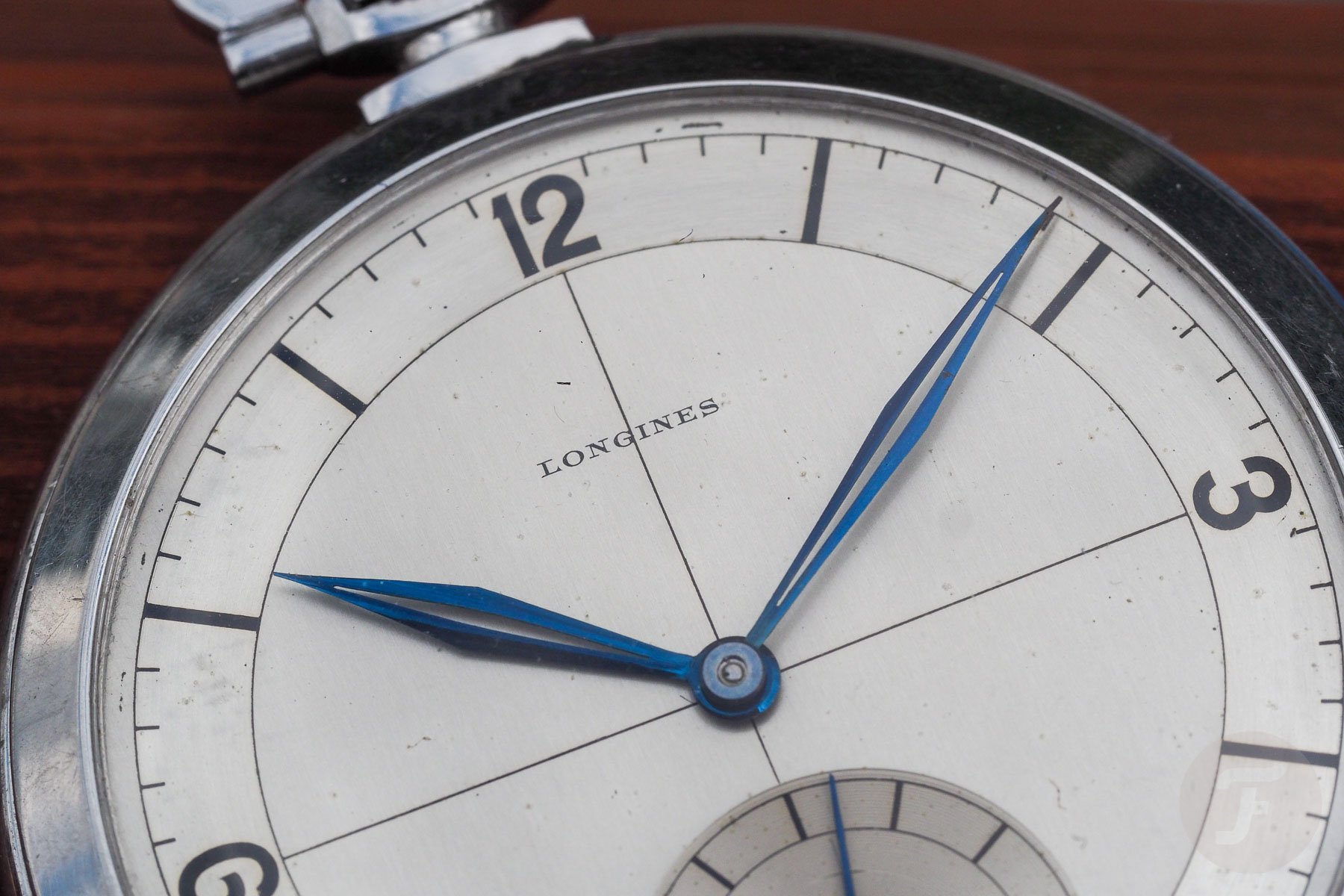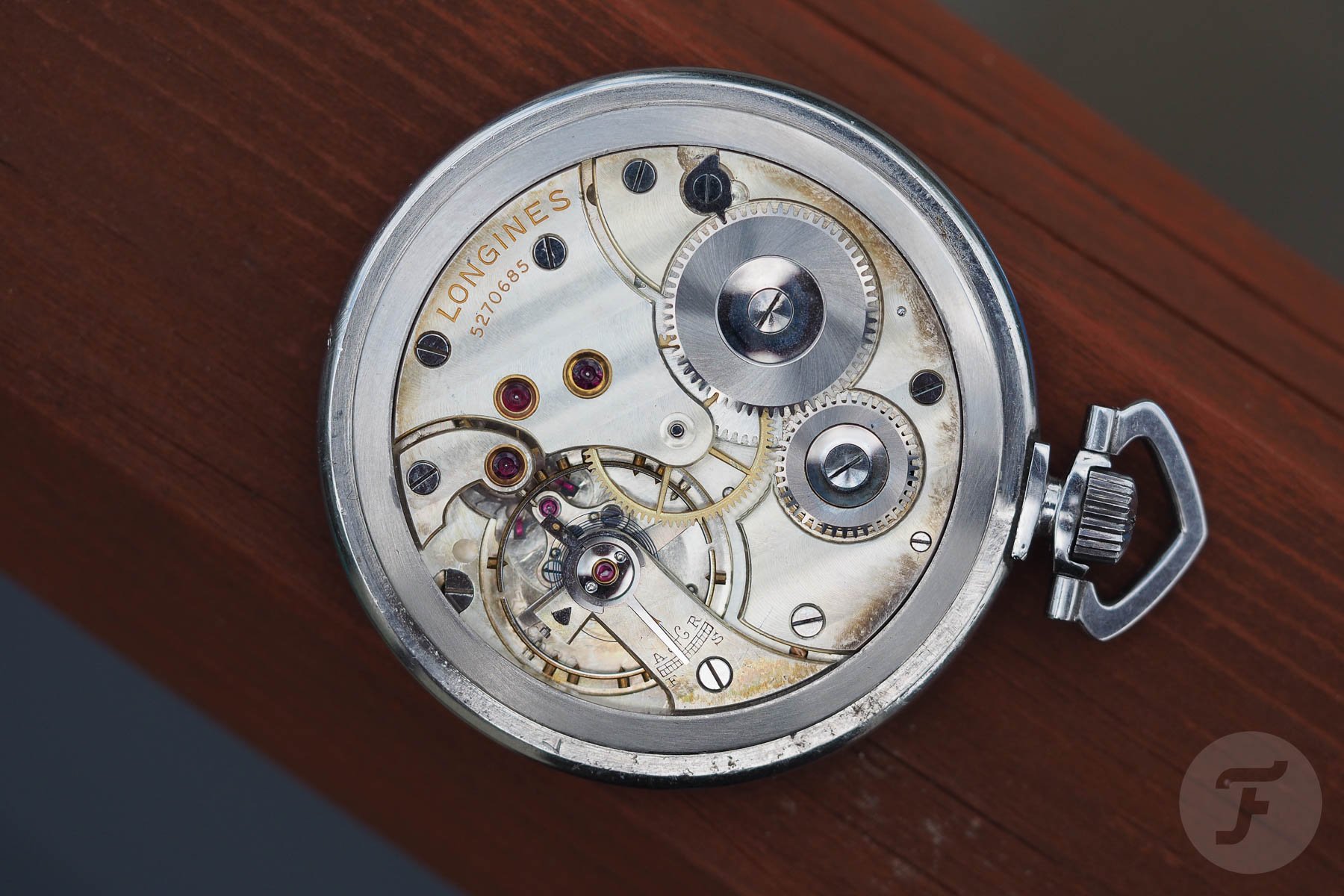Vintage Watches: Art Deco Pocket Watches From Longines And Tissot
At Fratello, we focus on watches, and 99.9% of the time, that means ones for the wrist. However, it’s interesting that the wristwatch is still in its relative infancy. It was the pocket watch that loomed large in prior centuries. Today, we’ll look at two gems from the twilight of the pocket watch era. These are Art Deco specimens from Longines and Tissot and are downright lovely.
I can’t lie; I’ve wanted a decent pocket watch for a long time. I have no practical use for one (who does?!), but I admire them, and there’s no doubt that my desk would look better with one happily ticking away on its surface. Ornate porcelain-dial pieces or expensive models have never been my focus. No, I’ve been looking on and off for a decent Art Deco pocket watch with a steel case. Of course, in this game, good watches come when you’re not looking and, usually, in pairs. So today, I’ll share two lovely watches from Longines and Tissot. They’re thematically similar but also quite different. I hope you enjoy this rare look at a different type of watch today.
A few words about pocket watches
Before we discuss this pair of Art Deco lovelies, let’s talk about the market for pocket watches. When I was a kid and attended antique shows with my dad, pocket watches garnered more attention than wristwatches. Furthermore, American watches were more popular in the USA among collectors. I also recall that gold was more treasured than steel, and early 1900s watches were the most prevalent. It seems that pocket watches fell out of favor in the ’90s, and the fever has never returned to its former level. On the other hand, these antiquated horological items have a quiet, rabid group of followers. Pocket watches display amazing workmanship more clearly than wristwatches, and they’re often available for a fraction of the price. True, we argue against the use case of a pocket watch. But let’s not kid ourselves; most of us own a heaping pile of wristwatches that sit around in a safe like a pocket watch.
Additionally, pocket watches can allow enthusiasts to collect specimens from brands they’d otherwise not manage to afford. Look at real (not silly listed prices) for Patek or Rolex pocket watches, and you’ll see what I mean. Plus, these have more craftsmanship per square millimeter than any wristwatch. Finally, while I don’t suspect most will revert to wearing a waistcoat anytime soon, a pocket watch is a stunning desk accouterment.
The Longines 37.9 ABC is Art Deco perfection
The first Art Deco pocket watch comes from Longines. This watch dates to 1934, but the styling suggests it could still be in production today. The current Longines Heritage Classic wristwatch bears a strong resemblance. This watch measures 47mm wide and 8.5mm thick and is made of stainless steel. It bears an acrylic crystal that sits flush with the bezel edge.
The case back, bezel, and side profile show a slender, modern design. What I like about pocket watches from this period is that they no longer have bulbous case shapes. Here, crisp edges are important, and they complement the dial design. While the idea of a pocket watch may be anachronistic, this Art Deco Longines looks timeless. Then, there’s the bow, the little hoop where a chain is attached. On this model, it’s suitably angular. Importantly, it’s also tight and not floppy, a characteristic that collectors like.
The dial and, quite possibly, the coolest hands I’ve seen
Longines made many Art Deco pocket watches. A quick internet search or a trip to this informative site reveals some real drool-inducing examples. In fact, Charlie Dunne of Wind Vintage sent me a link to an Italian brochure from 1938 with this model (check out Charlie’s recent article on a special type of Longines pocket watch). The sector dial combines many elements that blend to form a beautifully designed creation. Radial block numerals, a silvery minute track, and a flat silver central area with crosshairs blend with a concentric-grained sub-dial. However, it is the hands that steal the show. Longines selected blued hands and gave them a sword shape. However, the centers of the hands are hollow, resulting in a dramatic and precise look. It’s fantastic, especially since the watch is 90 years old.
The 37.9 ABC caliber
This model uses the Longines in-house 37.9 ABC caliber. This is a 13-ligne movement, which equates to roughly 29.2mm in diameter. It features 15 jewels and runs at a leisurely 18,000vph frequency. The movement debuted in 1932, and I’ve seen it with different plating types. It’s a higher-end caliber, and the tell is the presence of chatons or small brass sleeves around the jewels. If you’ve never wound a quality pocket watch, I highly suggest it! It’s gratifying because it’s possible to feel the large gears turning when moving the crown.
I’d be remiss not to mention the underside of the case back. Many pocket watches use snap-on backs, and this one engages with a satisfying, barely worn click. A look inside reveals the kind of finishing that makes pocket watches so magical. On this Longines, the engine turning resembles a scallop or possibly a plume of Art Deco peacock feathers. Whatever it is, good luck finding that in a modern watch!
I was lucky enough to score this fantastic Longines from my buddy Lawrence. He owns several lovely pocket watches and is disciplined enough to keep his collection at a certain number. The condition is lovely for the age and lacks the typical staining often seen on these pieces. Water resistance, naturally, wasn’t a strong suit. Pricing for pocket watches is interesting, with many sellers content to wait until the right buyer comes along. Still, for somewhere between €700 and €1,500, it should be possible to land a nice example.
High contrast with the Tissot Cal. 43
The other subject today is an Art Deco Tissot pocket watch from 1941. This piece also has a stainless steel case but is slightly bigger all around, coming in at 48mm across and 12mm thick. Like the Longines, it has an acrylic crystal, but it is domed and provides plenty of reflections! Today’s Heritage 1938 lacks the bullseye-style dial, but there’s certainly a familial resemblance.
This Tissot has steps on the front and reverse sides of the case. Here again, a good, sharp specimen is important to highlight these details. One matter to note is that neither watch in this article has a monogram on its case back. That’s uncommon, but I honestly wouldn’t be bothered either way. The bow on this watch is looser, which indicates heavier use. It is possible to have a watchmaker tighten this, though.
A lovely bullseye/tuxedo dial
Within this Art Deco Tissot, we find a high-contrast “bullseye” or “tuxedo” dial. When a mainland European auction house advertised the watch, it was impossible to judge the colors. The central section is white with vertical brushing, while the outer rings of the main dial and sub-dial are mirrored and dark gray. This was a genuine surprise and looks amazing from an angle. Unfortunately, it’s not easy to capture due to the highly reflective crystal.
The white handset on this watch is unlike anything I’ve seen and doesn’t fit any standard description. These hands are nice, though, and were part of the draw for me. The crowning touch is one of the best logo designs in watch history. “Tissot” with its characteristic “T” sits above the block-lettered “Antimagnetique” text with its serifs, and the result is glorious.
The caliber 43 inside
This watch may lack the high-end finishing of the Longines in the movement department, but the in-house Tissot caliber 43 is still lovely. It also features 15 jewels and runs at 18,000vph. Note the use of burnished jewels instead of chatons. This is a giveaway that the movement is more workmanlike. Still, it’s also satisfying to wind and keeps good time.
Even if the Tissot uses a less expensive movement, it still shows off its details. Once again, the underside of the case back reveals engine-turning. It’s not as ornate as that of the Longines, but it’s still pretty and better than an empty canvas.
I mentioned that this Art Deco Tissot came from an auction house in mainland Europe. It hammered for roughly €200 after all fees, which feels like an absolute bargain. This was my first pocket watch, and for better or worse, it has sparked my interest in them!
Final thoughts
Pocket watches may not be overly practical, but they’re beautiful objects. They showcase watchmaking on a different scale than wristwatches while providing ample room for a dial design to unfold. I don’t think I’ll rack up a large collection, but I will watch for additional Art Deco pieces. Perhaps I will also need to add more desks at home to display them.

















